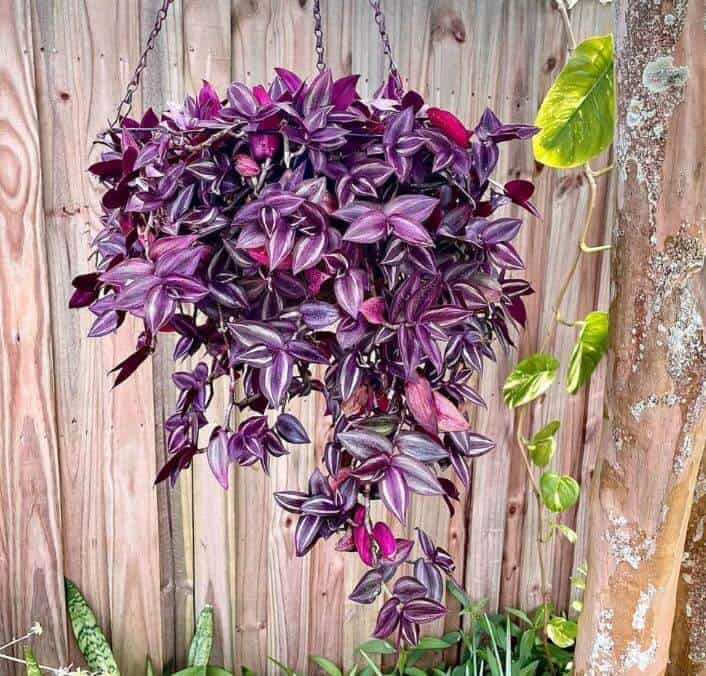Last Updated on April 26, 2023 by a Friendly Gardener
The popular Wandering Jew plant boasts more than fifty varieties, each with foliage that has a unique pattern. This is the means for distinguishing one Wandering Jew plant from another. Native to Guatemala, Mexico, and North and South America, tradescantia varieties can feature both solid and variegated leaves.
The tradescantia is an easy tropical plant to cultivate which, along with its vivid colors, also contributes to its popularity. It is a beautiful addition to any indoor décor and is often presented in hanging baskets or positioned in higher spots to display its colorful cascading beauty.
Tradescantia plants belong to the Commelinaceae family. One tradescantia variety that merits consideration is the Tradescantia Red Gem, botanically known as the tradescantia zebrina ‘Red Gem’. This perennial cultivar has mostly deep ruby red burgundy-hued leaves with silver stripes explaining why it is also referred to as a tradescantia zebrina.
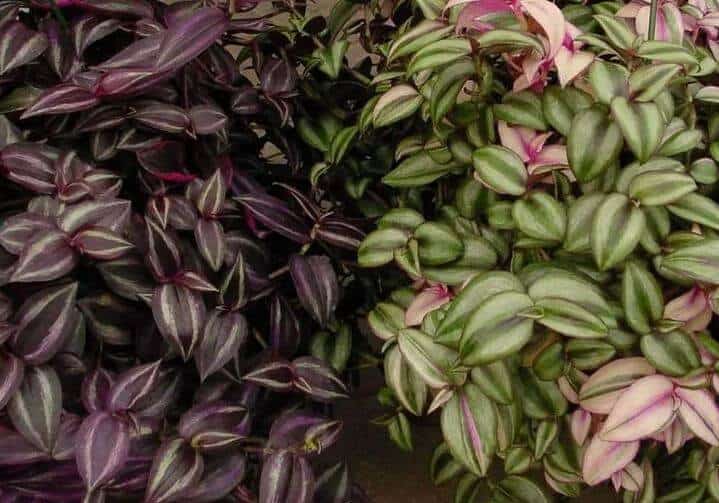
The tradescantia Dark Desire may inspire a bit of confusion as it features dark purplish almost black foliage that can change to a deep burgundy hue thus it is often referred to as a “red gem” as well.
When it flowers, blooms are small and pink framed with tiny succulent leaves. This cultivar is rarer and more difficult to acquire. Its native habitat is found in South America.
Tradescantia Red Gem Plant Care
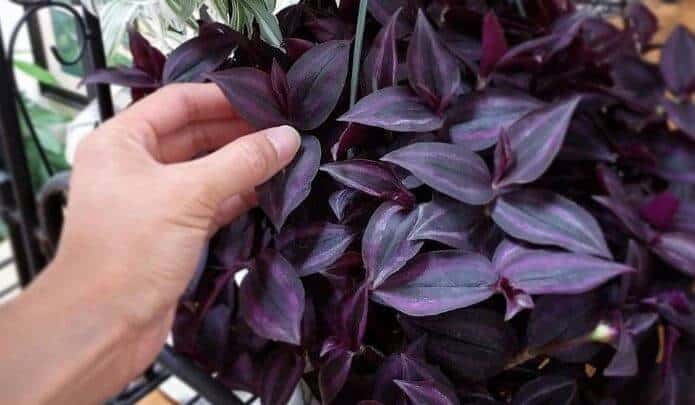
The red gem tradescantia does well as an indoor houseplant and can be used to decorate porches, patios, and balconies during the summer season. It is an easy-to-care-for addition to indoor gardens. This particular cultivar will usually reach approximately seven inches in height and as much as twenty-seven inches in width for a glorious display of vibrant color.
Soil
Fortunately, a tradescantia red gem is not fussy about the type of soil it is cultivated in. Soil pH should ideally be neutral. The growing medium should have some water retention to be able to remain moist yet must be well-draining to prevent root rot from excess water. Blend one part peat, one part compost, and one part potting soil for optimal results. Add in a handful of perlite or sand to ensure drainage. Containers can be in clay or terracotta to aid in wicking away excess moisture if you are prone to overwatering.
Light
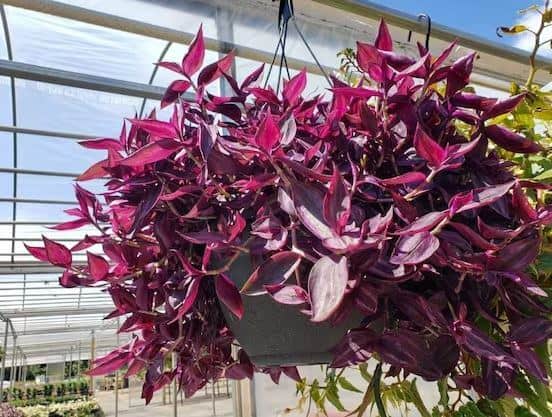
The tradescantia red gem like many tropical plants prefers generous bright light that is indirect. If you do not provide sufficient light, the red gem’s silvery stripes will fade. Do not expose the red gem to direct sunlight as this can scorch foliage, damaging it irreparably.
Water
The tradescantia red gem must have consistent moisture to thrive. These plants must not be allowed to dry out, so a regular watering schedule becomes essential. Water your red gem as soon as the soil bed begins to dry. In most cases, this will be two to three times weekly especially if your plant is of significant size. Drainage is fundamental as these plants are susceptible to root rot.
Humidity
This tradescantia cultivar does very well in high humidity. If this plant does not receive enough humidity, leaves will begin to brown. If your indoor environment has low humidity levels, consider moving this plant to a bathroom or kitchen. Otherwise, you can place your plant on a pebble tray or near a space humidifier. Regular misting will also aid the humidity level, although it will not be resolutive.
Temperature
The tradescantia red gem cultivar prefers temperatures measuring between 60° and 80°F. If temps are allowed to fall below 50°F. foliage will begin drooping. Indoor temperatures are more than adequate for successful cultivation.
Feeding
Tradescantia cultivars boast a rapid growth rate even without the benefit of fertilization. Plants can benefit from a boost during their growing season in the spring and summer. Consider applying a slow-release fertilizer or a diluted liquid fertilizer twice monthly.
Pruning
To create a bushier or fuller growth habit, pruning is advised. Regular trimming will encourage a fuller appearance and help in the development of healthier foliage. Leggy vines will need to be trimmed. When trimming, these vine sections can be used for propagation.
Repotting

Mature plants will benefit from annual repotting due to their rapid growth rate. Select a new pot that is a couple of inches larger.
Propagating a Red Gem Tradescantia
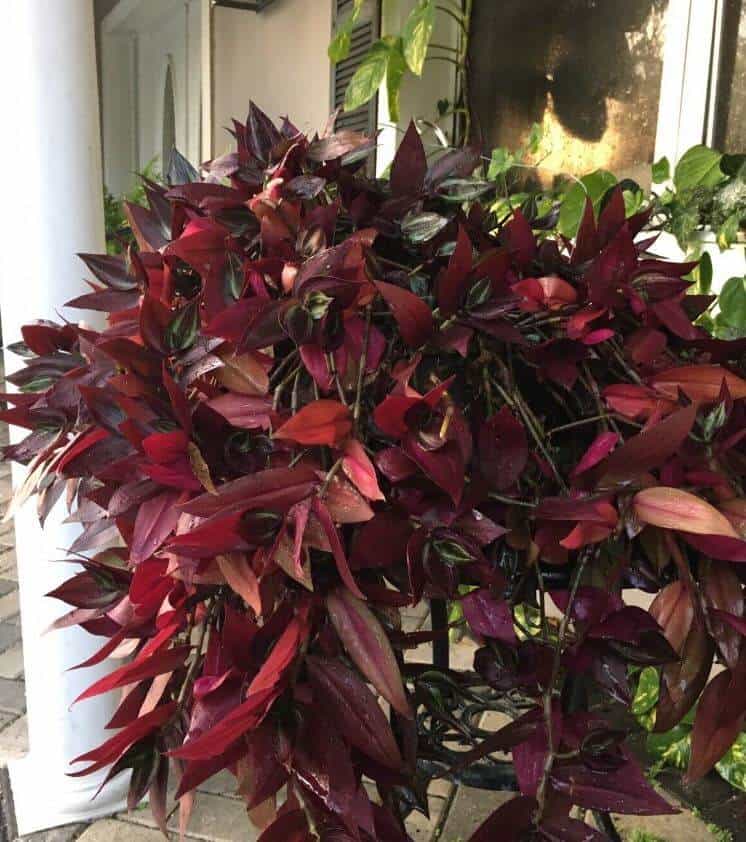
The Red Gem tradescantia can be successfully propagated either in soil or water using stem cuttings. Water propagation tends to be faster. Remove a stem section from a healthy plant that is approximately five to six inches long. Trim the section just below a leaf node. Remove any lower leaves on the stem cutting leaving only the top foliage.
Place the cutting in a transparent glass vase or jar with water. The lowest leaf on your cutting should remain above the water. Place your cutting in a sunny spot with bright indirect light and an environmental temperature between 60° and 80° F. Change the water every four days to a week to prevent bacterial growth. Roots should develop within two to three weeks. Once they have developed, your cutting can be transplanted into soil and watered to minimize transplant shock.
You can also opt to plant your cutting directly in the soil, making sure to water it well to encourage growth.
Red Gem Tradescantia Problems
Wilting red gem leaves generally are an indication of too little light or a lack of water. Mature red gem plants will naturally lose their leaves as they age.
Mushy foliage or stems signal root rot. All infected plant parts must be removed and disposed of. Healthy roots should be treated with a fungicide and repotted in fresh soil.
These cultivars are susceptible to aphids and spider mites.
Apply an organic insecticidal soap or neem oil to successfully treat these pest infestations. Neem oil is a natural treatment that will not harm you or your pets. Hence it is safe for birds and local wildlife. It will target pests. Neem oil can be used for treating aphids and spider mites, as well as scale and whitefly and most common houseplant pests. It works well for treating fungal infections such as mildew, rust, leaf spot, blight, etc.
Tradescantia Red Gem Toxicity
The red gem cultivar is toxic to humans and family pets. Tradescantia poisoning symptoms include dermatitis, itching, scratching, fur loss, irritation and redness, conjunctivitis, or red eyes.

